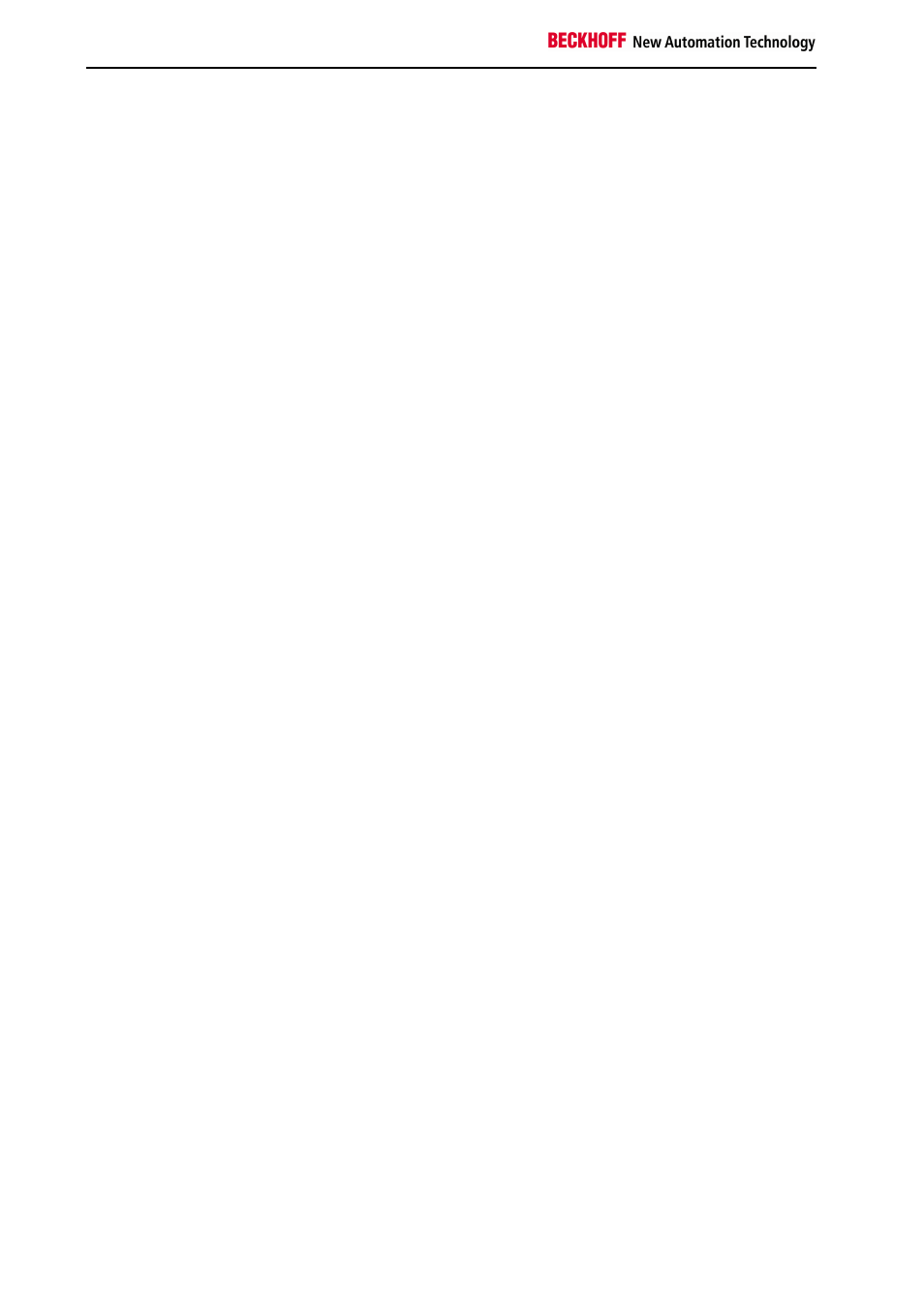Peripheral data in the process image – BECKHOFF BK5200 User Manual
Page 16

Basic Principles
16
BK52x0
Peripheral data in the process image
After being switched on, the Bus Coupler determines the configuration of
the inserted input/output terminals. The assignment of the physical slots for
the input/output channels and the addresses in the process image is
carried out automatically by the Bus Coupler.
The Bus Coupler creates an internal assignment list, in which the
input/output channels have a specific position in the process image. A
distinction is made here according to inputs and outputs, and according to
bit-oriented (digital) and byte-oriented (analog or complex) signal
processing.
Two groups are created, one for inputs and the other for outputs. Each
group has the byte-oriented channels in ascending sequence starting from
the lowest address. The bit-oriented channels are placed after this block.
Digital signals
(bit-oriented)
The digital signals are bit-oriented. This means that one bit in the process
image is assigned to each channel. The Bus Coupler creates a memory
area containing the current input bits, and ensures that the bits in a second
memory area dedicated to the output channels are written out immediately.
The details of the assignment of the input and output channels to the
controller's process image is explained fully with the aid of an example in
the appendix.
Analog signals
(byte-oriented)
The processing of analog signals is always byte-oriented. Analog input and
output values are represented in memory by two bytes each. Values are
represented in SIGNED INTEGER or two‘s complement format. The
number "0" stands for the input/output value "0 V", "0 mA" or "4 mA". The
maximum value of an output or input value is represented, according to the
standard settings, by "7FFF" (hex). Negative input or output values, e.g. -
10 V, are represented from "1000" (hex). The intermediate values are
correspondingly proportional. A range with a resolution of 15 bits is not
achieved for all inputs and outputs. If the actual resolution is 12 bits, the
last three bits have no effect in outputs, while as inputs they are read as
"0". Each channel also has a control and status byte. The control and
status byte is the highest value byte. Version 2.0 of the DeviceNet coupler
does not permit the control and status byte to be read. An analog channel
is represented in the process image by 2 bytes. The following versions
permit expansion of a channel's data width by means of the KS2000
configuration software.
Special signals and
interfaces
A Bus Coupler supports Bus Terminals with other interfaces such as
RS232, RS485, incremental encoder and others. These signals can be
considered similarly to the analog signals named above. For some special
signals the bit width of 16 is not sufficient. The Bus Coupler can support
any byte width.
Default assignment of
inputs/outputs to the
process image
Once it has been switched on, the Bus Coupler finds out how many Bus
Terminals are inserted, and creates an assignment list. The analog and
digital channels, divided into inputs and outputs, are assembled into
separate parts of this list. The assignment starts on the left next to the Bus
Coupler. The software in the Bus Coupler collects the individual entries for
each of the channels in order to create the assignment list counting from
left to right.